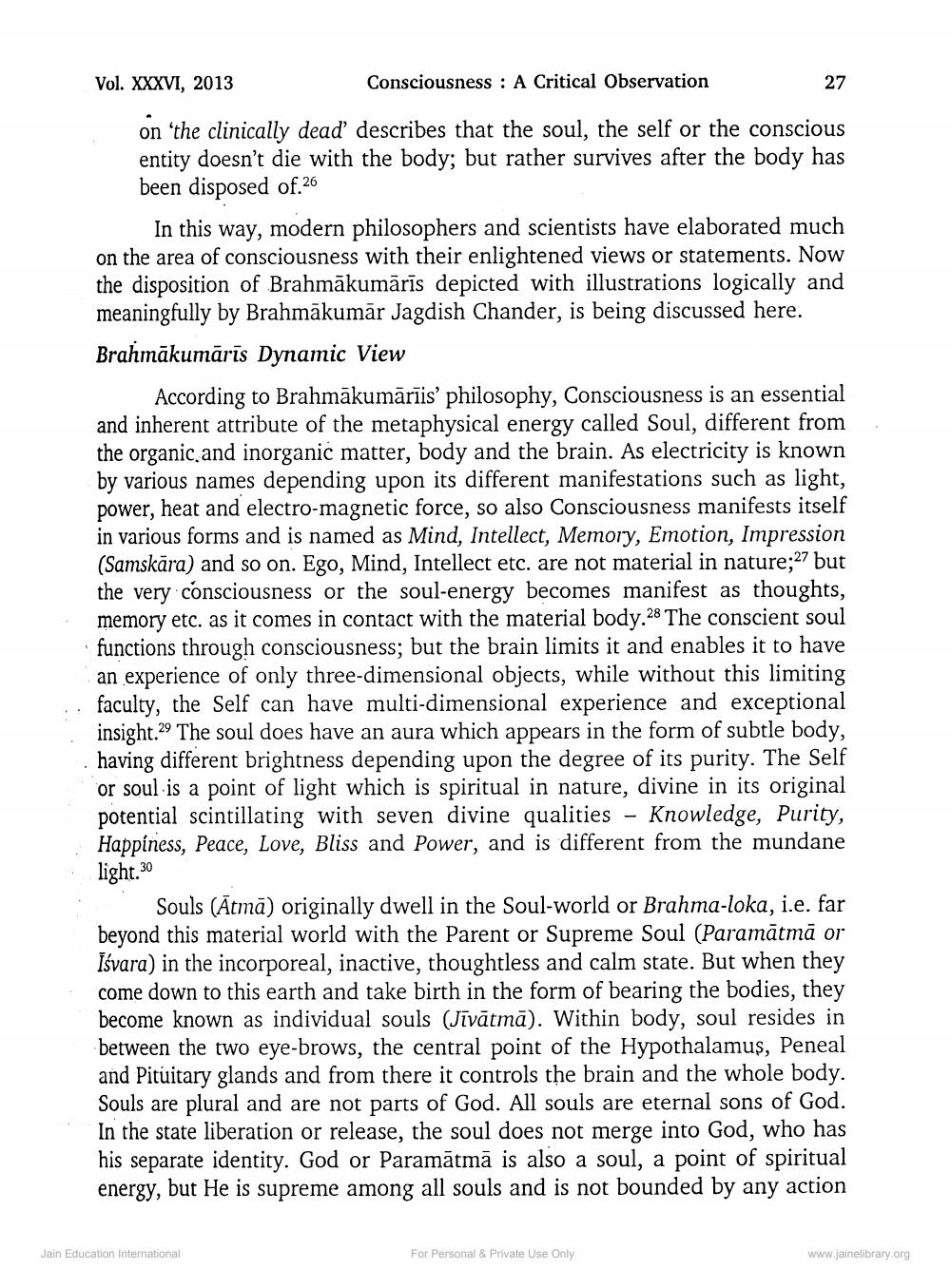________________
Vol. XXXVI, 2013
Consciousness : A Critical Observation
27
on 'the clinically dead' describes that the soul, the self or the conscious entity doesn't die with the body; but rather survives after the body has been disposed of.26
In this way, modern philosophers and scientists have elaborated much on the area of consciousness with their enlightened views or statements. Now the disposition of Brahmākumāris depicted with illustrations logically and meaningfully by Brahmākumār Jagdish Chander, is being discussed here. Brahmākumārīs Dynamic View
According to Brahmākumārīis' philosophy, Consciousness is an essential and inherent attribute of the metaphysical energy called Soul, different from the organic and inorganic matter, body and the brain. As electricity is known by various names depending upon its different manifestations such as light power, heat and electro-magnetic force, so also Consciousness manifests itself in various forms and is named as Mind, Intellect, Memory, Emotion, Impression (Samskāra) and so on. Ego, Mind, Intellect etc. are not material in nature;27 but the very consciousness or the soul-energy becomes manifest as thoughts, memory etc. as it comes in contact with the material body.28 The conscient soul functions through consciousness; but the brain limits it and enables it to have
an experience of only three-dimensional objects, while without this limiting :. faculty, the Self can have multi-dimensional experience and exceptional
insight.29 The soul does have an aura which appears in the form of subtle body, having different brightness depending upon the degree of its purity. The Self or soul is a point of light which is spiritual in nature, divine in its original potential scintillating with seven divine qualities - Knowledge, Purity, Happiness, Peace, Love, Bliss and Power, and is different from the mundane light.30
Souls (Atmā) originally dwell in the Soul-world or Brahma-loka, i.e. far bevond this material world with the Parent or Supreme Soul (Paramātmā or īśvara) in the incorporeal, inactive, thoughtless and calm state. But when they come down to this earth and take birth in the form of bearing the bodies, they become known as individual souls (Jīvātmā). Within body, soul resides in between the two eye-brows, the central point of the Hypothalamus, Peneal and Pituitary glands and from there it controls the brain and the whole body. Souls are plural and are not parts of God. All souls are eternal sons of God. In the state liberation or release, the soul does not merge into God, who has his separate identity. God or Paramātmā is also a soul, a point of spiritual energy, but He is supreme among all souls and is not bounded by any action
Jain Education International
For Personal & Private Use Only
www.jainelibrary.org




